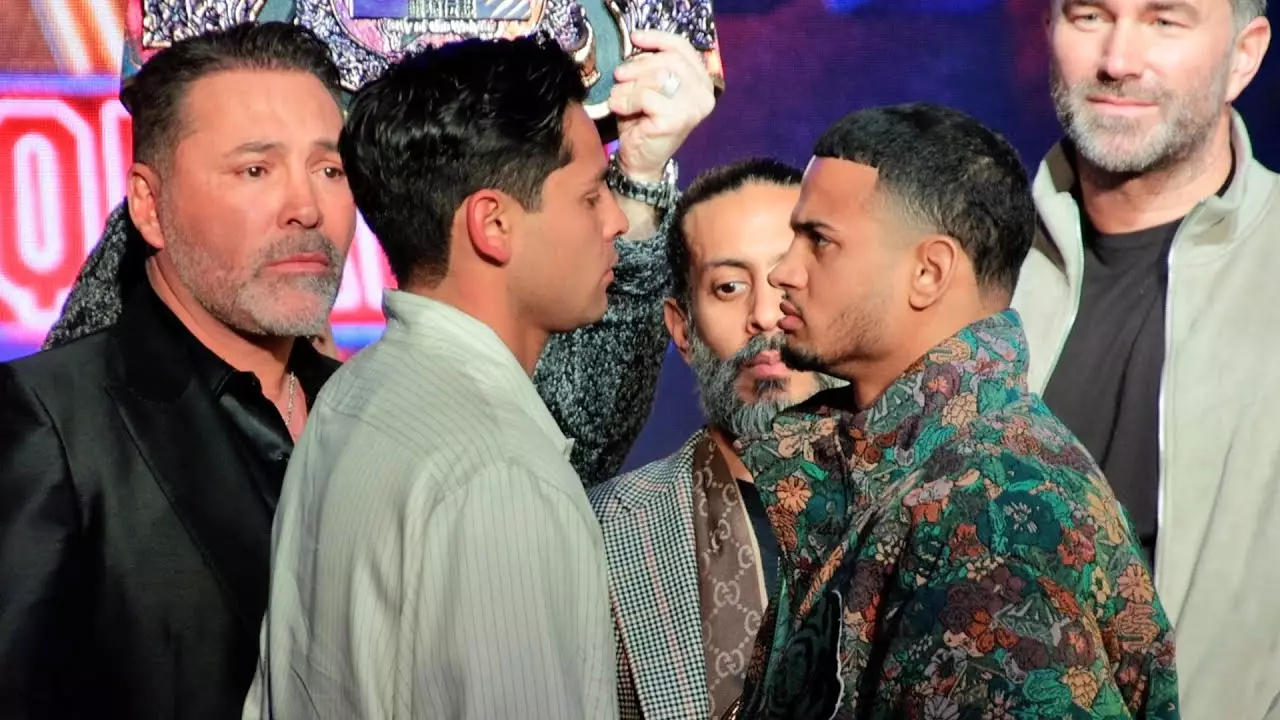In an industry often characterized by immense financial rewards for high-profile athletes, Ryan Garcia’s recent announcement that he will earn around $20 million for his upcoming fight against Rolando ‘Rolly’ Romero serves as a striking example of the changing dynamics in professional boxing. This staggering sum, especially for what many consider a “tune-up fight,” highlights not just Garcia’s rising star power but also the enormous financial influx driven by promotional deals reshaping the sport. Set to take place on May 2nd at Times Square in New York City, this bout may serve as merely a precursor to an anticipated rematch with Devin Haney in October. However, the financial stakes, particularly for Garcia, signal that this is not just any ordinary fight.
The Role of Promoters in Boxing’s Monetary Surge
Garcia’s decision to laud Turki Alalshikh, who has facilitated this potential blockbuster rematch, encapsulates the significance of effective promotion in maximizing an athlete’s earnings. As the mastermind behind many of the current big-money matches, Alalshikh’s reputation is growing amongst fighters craving financial success. “He’s going to move the needle,” Garcia stated in an interview, a comment underscoring the significant impact that strategic matchmaking and promotional efforts have on the bottom line of athletes. It’s evident that the relationship between fighters and their promoters is evolving; fighters increasingly recognize the importance of a promoter who understands the current market landscape and can leverage their brand effectively to create lucrative opportunities. Alalshikh has unequivocally proven his worth, the question arises: how sustainable is this model for fighters in the long run?
The Pressure of Performance and Perception
While Garcia is clearly reveling in the financial spotlight, the pressure associated with performance remains ever-present. Although it seems that neither he nor Haney is required to win their respective bouts on May 2nd for the highly-anticipated rematch to occur later this year, the looming specter of a potential upset, particularly for Haney, raises questions about the ability to operationalize such financial opportunities fully. Haney faces a more formidable opponent in Jose Ramirez, a fighter whose past accolades signify a legitimate threat. Thus, while Garcia might be paddling down a lucrative stream, Haney finds himself in murky waters fraught with challenges that could yet simplify or complicate the roadmap towards their bout.
Incentives to Compete Beyond Money
What Garcia’s remarkable financial payout illustrates is more than just the potential earnings from a single match; it epitomizes a broader cultural shift within boxing. There are insinuations that the quality of life and legacy in the ring could potentially be overshadowed by the financial windfall fighters are being offered. Garcia himself addressed this phenomenon when he mentioned the lack of excuses for fighters who turn down fights, insisting that money should not be an issue in the modern era where promoters can provide fighters with contracts that dwarf any previous earnings in the sport. This lays the foundation for a culture that prioritizes financial accolades over the artistry of sportsmanship.
Zoning in on the Future of Boxing Contracts
Conversations regarding multi-fight contracts, such as the rumored $30 million deal discussed by Teofimo Lopez with Alalshikh, showcase boxing’s impending financial evolution. With fighters like Garcia and Haney potentially setting the stage for a new standard of earnings, one cannot help but wonder how this trend will influence upcoming generations of boxers. As more talents enter the fray—lured by the promise of wealth as much as fame—the sport itself may face challenges in maintaining its storied traditions of skill, discipline, and perseverance.
In this era of celebrity matches and social media-driven prominence, Ryan Garcia stands at the forefront, not merely as an athlete but as a pioneer navigating the monetary tide of boxing. While the gold rush continues, the intrinsic values that once held sway in the ring may be tested, giving way to a new era marked by unprecedented earnings and, potentially, diluted competitive integrity.

